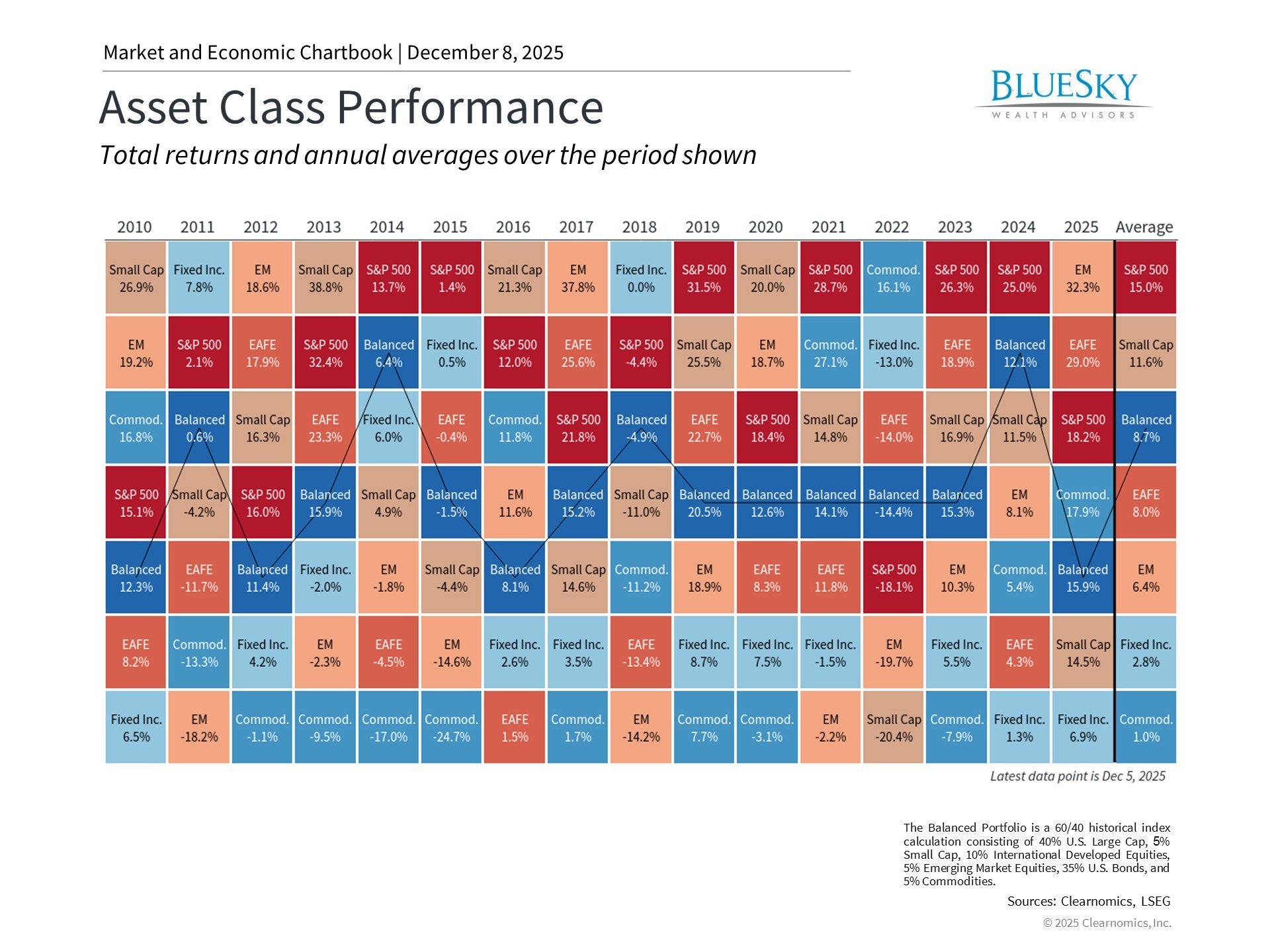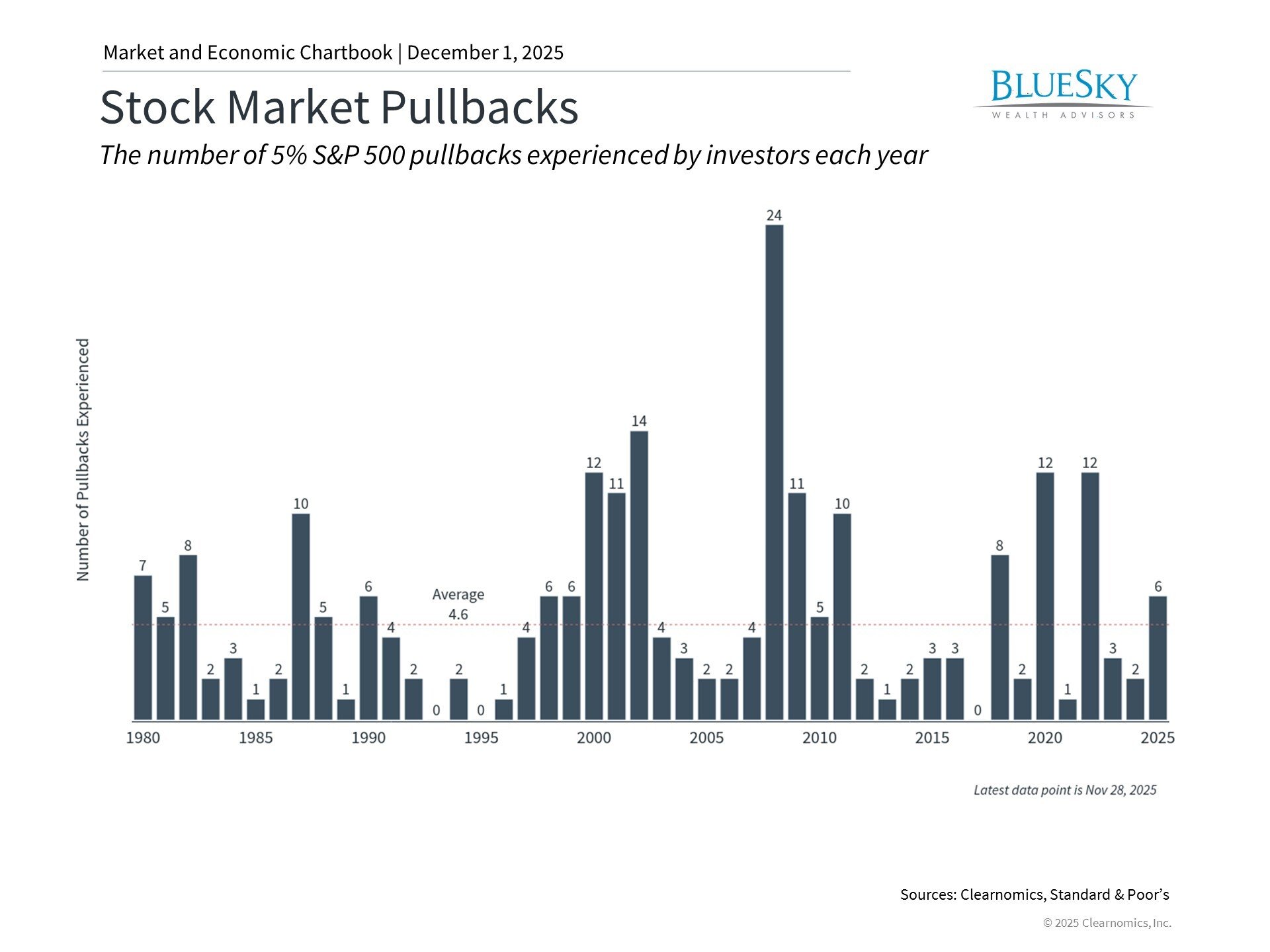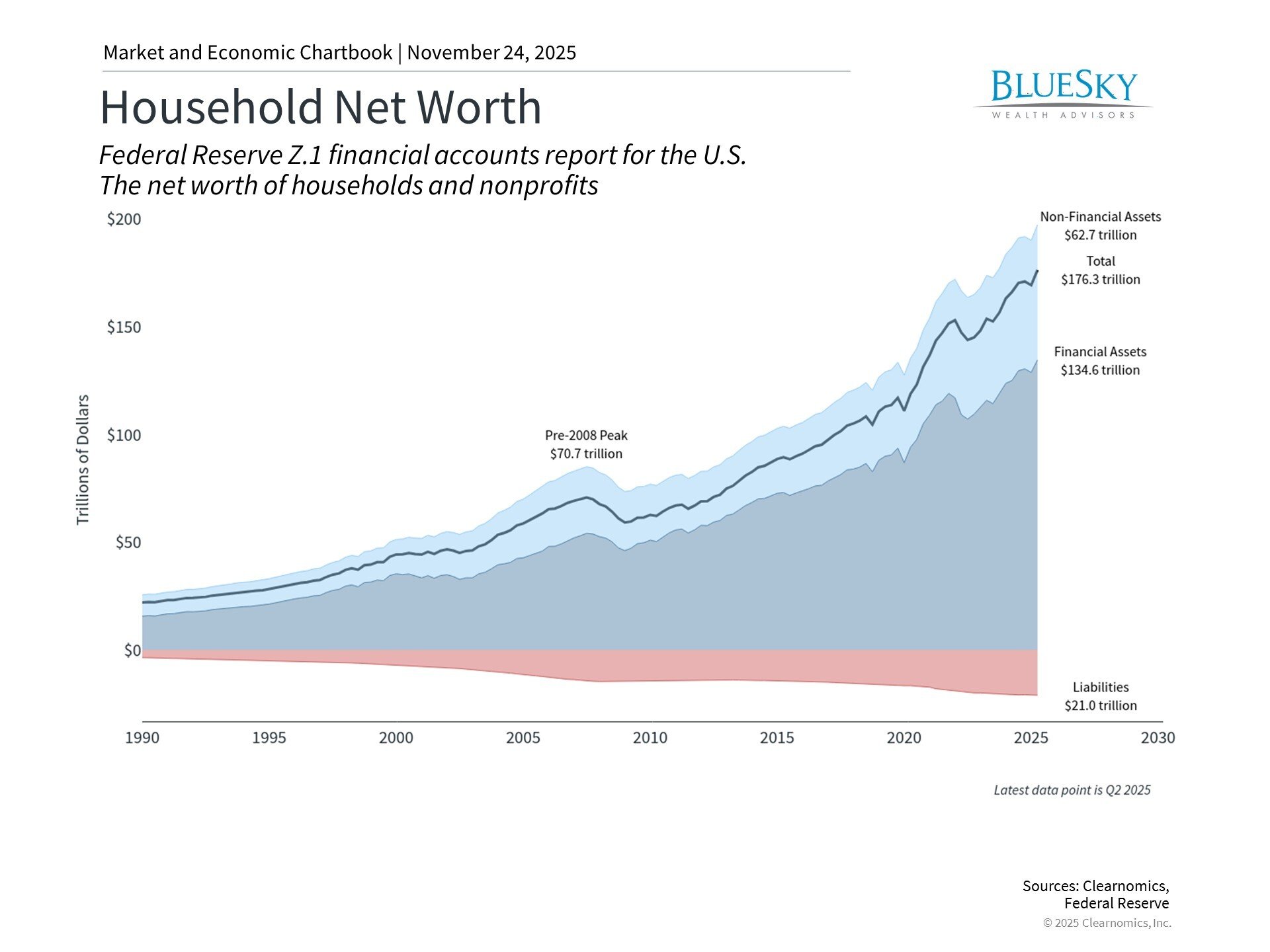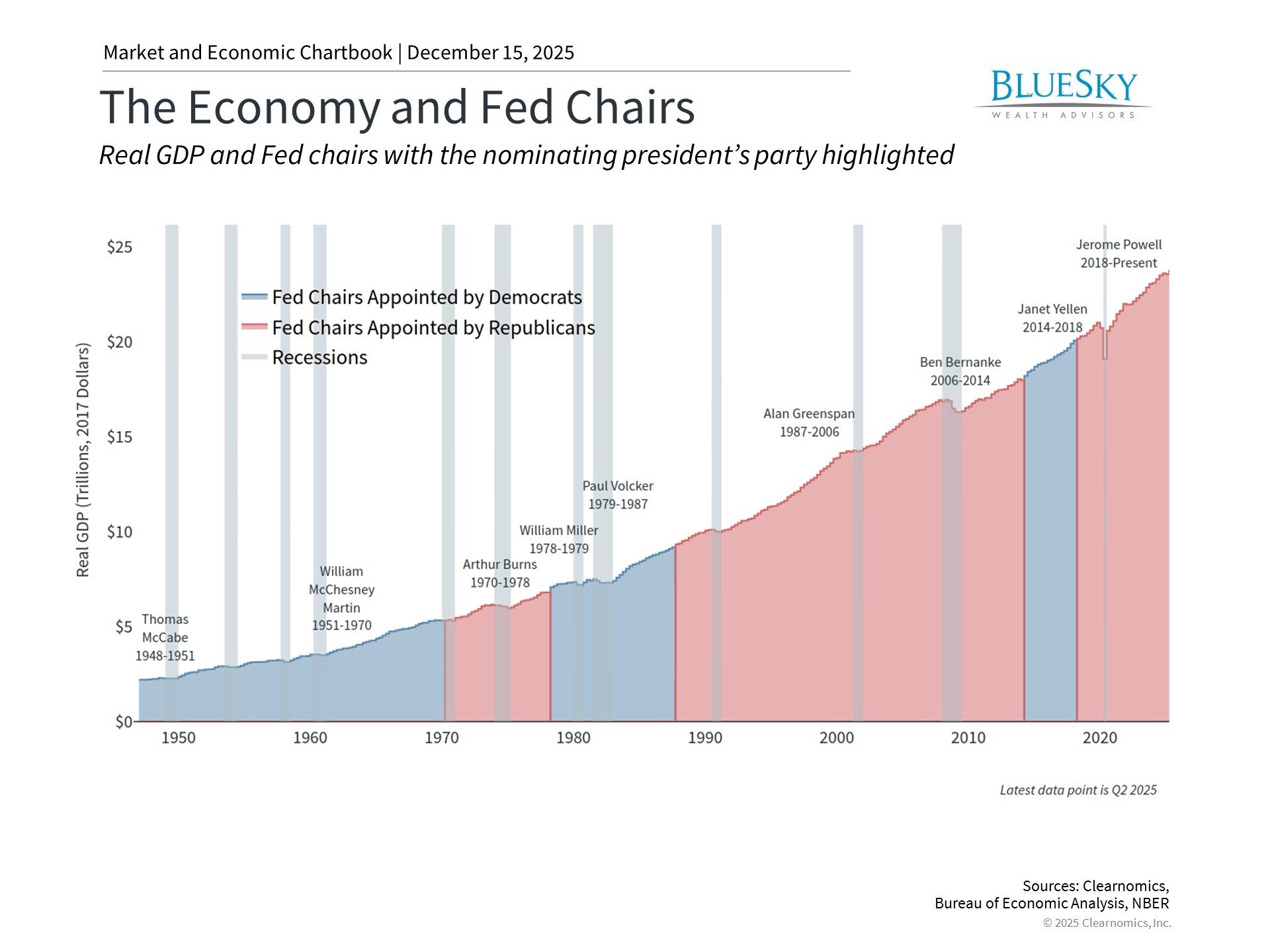
Portfolio Changes: Special Message from CEO David Blain, CFA
Portfolio Changes: Special Message from CEO David Blain, CFA
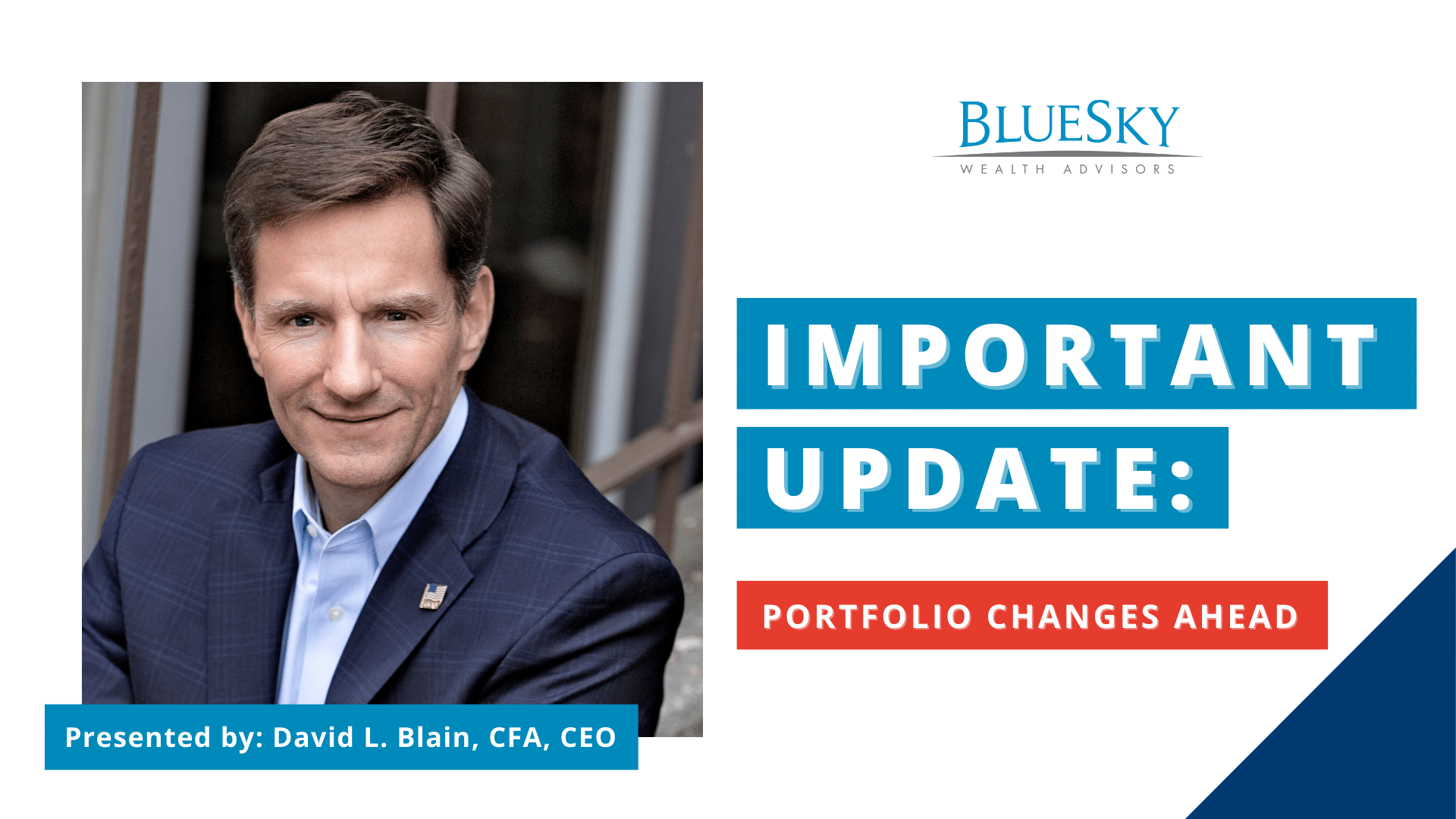
David L. Blain, CFA, is the Founder and CEO of BlueSky Wealth Advisors and author of Invest In Your Life, Not Just Your Portfolio.
With changes brewing in the current economy and the market impact of COVID-19 waning, CEO David L. Blain, CFA, explains how BlueSky will be moving forward and adjusting clients’ portfolios for optimum success. Mirroring our investment strategy pre-COVID, we will begin to reintroduce more value stocks into the allocation models while including smaller company stocks. To hear the full update, please see David’s message below:
Message Highlights:
0:00 – 0:38 | Introductions
0:39 – 1:30 | Bottom Line, Up-Front (BLUF): Upcoming Portfolio Adjustments
1:31 – 2:45 | COVID Rates Dropping & Economic Recovery 2.0
2:46 – 4:49 | Inflation; Supply-Chain Issues; Supply & Demand Imbalance; First World Liquidity Push
4:50 – 5:59 | Growth Return in the US; Labor Force Constraints
6:00 – 6:47 | Tax Increases: High-Earning Individuals, Businesses, and Trickle Down
6:48 – 7:19 | Interest Rates on the Rise: 10-Year Treasury
7:20 – 8:34 | Market Highs: Correction, Reversal, Japanese Markets; Low Expectations for Bond Market
8:35 – 11: 15 | So What Does All This Mean? Expected Lower Market Returns Going Forward
11:16 – 13:02 | Areas of Opportunity in the Market & Private Real Estate Investment Opportunities for Accredited Investors
13:03 – 15:50 | Adjustments to the Model Portfolio: Looking Towards Small Value Company Stocks, Foreign Markets, and Emerging Markets
15:51 – 17:33 | How This Update Impacts BlueSky Clients
17:34 – 17:51 | Summary & Closing Statements
Transcript:
Good evening everyone. This is David Blain, CEO of BlueSky Wealth Advisors. I hope you’re having a great day. I just wanted to bring you a quick update on some economic things, as well as our portfolios. For those of you that know me, I used to be in the military, and we used to have a saying called BLUF, B-L-U-F, and that’s stands for bottom line upfront. When you’re briefing the commander or something, always put your bottom line upfront. So for those of you that are in a hurry, don’t want to stick through the whole video, I’m going to give you that bottom line upfront.
The economics of the markets and economy are changing. And so we are going to make some tweaks to our portfolios. We’re going to remove the overweight large-cap growth, heavy technology that we’ve been riding, this wave ever since COVID started, and we’re going to go back to what is more of a normal allocation for us, which is adding a little bit more value stocks into our portfolio, as well as a little bit more smaller company stocks. So that is the bottom line upfront.
We’re going to be making some portfolio change. So if you see some trading in your portfolio this week, that is intentional. It is us doing it. If you have questions about the specifics, of course, stick around for the rest of this video I’ll be explaining, but also feel free to reach out to your advisory team.
So in case you haven’t noticed, COVID cases around the country are dropping fast. In fact, Florida has the lowest rate right now, sort of moved out of the south and has headed north, but rates all over dropping. Hospitalization rates, death rates, everything like that, which is giving what I call a recovery 2.0 moment to our economy. Last year about this time when Pfizer announced the vaccines, despite continuing rising numbers, we saw an economic resurgence that went through the spring. And then with the Delta variant going through the United States, we saw people become more concerned. We saw economic growth decline throughout the summer, and we actually had a market correction in September of 5% percent, the first market correction in quite some time. But anyway, so COVID is receding. More vaccinations, more natural immunity, all those sorts of things. We’re seeing it recede. So let’s hope this time it stays, the low numbers stay where they appear they’re heading.
Similarly, if you haven’t been paying attention at all, inflation has taken hold. I won’t get into all the causes of certain products. Of course, energy, gas prices are spiking due to the restriction on energy production throughout the country. There’s supply chain issues throughout the world that’s causing that demand is larger than the supply. If you remember in any free market, any economic system, the price is set by the supply and the demand curve, back to sort of Econ 101. And so when you have supply curve shifting down, lower supply, and you have demand rising, or even staying the same for that matter, you’re going to have prices go up. And that’s what’s happening, is we’re having some significant supply chain issues. And yet the demand is increasing as economies are opening up, both here in the US and Europe and people are learning to deal with the COVID. So those two factors are leading to inflation.
Also, the Fed here in the US, the Fed, and Europe, the European Central Bank, the Japanese Central Bank, all major developed economies, Chinese Central Bank have been pumping liquidity into the economies by printing money and stimulating their economies by printing money and getting money out there and passing stimulative and things like that. So that combined with some supply chain disruptions, as well as a reduction in energy output due to not only policies of the new administration, but also labor shortages in those industries, we’re seeing prices definitely spike up. In fact, for those of you on social security, you’ll notice in your check-in in January, a very large increase. One of the largest increases that we’ve seen in a long, long time.
We are seeing growth return both here in the US, as well as globally. Economic growth continues to be recovering. It is constrained by the labor market, although most of that constraint seems to be restricted to hospitality, leisure, restaurants, some of those lower-paying jobs, which incidentally, the wages for those leisure and hospitalities up about 17% year over year. We’re seeing huge labor costs rise for those businesses in those industries. But that is a trend that’s happening, is the labor participation rate is a little bit lower. Most of the federal unemployment stimulus is backed off, but you still have people with savings and the advanced child tax credit coming in. You also have childcare issues in some cases for people. You have offices not opened. And so you just don’t have, for a variety of reasons, the number of people participating in the labor force. So there’s definitely a labor shortage.
We also have on the table some tax increases, both on the individuals, mostly for higher-income individuals, although we know how that goes. Eventually, those end up trickling down and hitting the middle class. For example, the alternative minimum tax, which has been in place. For many, many years was originally enacted to ensnare I think it was five or six people. And of course, now it ensnares millions and millions of people. But anyway, on the business side, there are some taxes that are proposed for businesses. Not going into all the details on this video but are expected to impact the earnings and the pricing of products at the company level. So we’re seeing that happen.
We’re also seeing interest rates go up a little bit from some lows last year. The 10-year treasury was in the 0.7 range, 0.7% for 10 years. That’s just incredible. So this year we’re back up into 1.5, 1.6, 1.7% on the 10-year. So those interest rates drive the cost of borrowing up. You may have seen if you’re trying to refinance or buy a house or buy a car or things like that, we are seeing the rates creep up a little bit.
Markets themselves have continued to reach new highs. As I said in September, we saw a little bit of a 5% correction, but since then, we’ve seen the markets reverse and continue to head higher. In fact, incidentally, I know you may not pay a lot of attention to it, but Japan… In fact, we have one of our advisors lives in Japan no where she is stationed for a couple of years. But anyway, Japan hit a market high. They finally got back to the level of 1990. If you can believe that the Japanese market has not achieved the level that it just hit since 1990. But it is recovering, along with the US as well.
We’ve seen also incidentally in September, the bond hedge. When stocks go down, you should see bonds go up. We saw that not work quite as well in September. So the bond hedge play was not very robust in September. While it’s still there, we think long-term because of where interest rates are and rising, we don’t expect to get as much hedge out of the bond market as normally.
So what does all this mean? Essentially go going forward, we are estimating much lower stock market returns, much lower bond market returns than we’ve experienced the past decade. At least really since 2008, we’ve been in a really nice upward trend. We had a brief moment of panic last March due to COVID. Actually, it’s been 2020, March of 2020. Boy, time goes by fast. This thing has been with us almost two years. But anyway, in March of 2020, we saw a 30%, 40% decline in the markets. But other than that, we’ve had pretty much a straight upward trend in the markets, and that has continued.
But what that portends for the future is whenever you have high returns today, you’re expected returns in the future are lower. And we definitely think that all the factors I just talked about today point to in the future lower investment returns. And I’m talking about a seven to 10-year time horizon. I absolutely think things are going to continue the way they are now. You’re going to see growth recovering. You’re going to see a fairly robust market continuing, at least in the short term. But at some point, these returns are going to have to moderate out. And so we’re looking at much lower returns out seven, 10 years, based on where markets are today. What we’ve experienced in the past, inflation, interest rates, things like that.
And then of course with the bond market, bond market returns are very easy to predict. If you want to know what your bonds are going to return in the next 10 years, look at the current yield. There’s a very high correlation between the current yield of a bond and it’s return over that timeframe. So we’re expecting very low. 1%, 2%, maybe 3% returns in the bond market. The 3% returns, certainly you’re going to have to take some credit risk. By that, I mean high yield bonds, emerging bonds, those types of things.
And then the stock market, large-cap growth, your tech companies that we have ridden this wave. I think it’s going to continue for a little bit, but it has to moderate at some point. And so we think there’s going to be a moderation in those returns to where the average market return here in the US is going to be more in the low single digits, 4%, maybe 5%.
Overseas, I think there’s a lot more opportunities overseas with emerging markets. And we also think that your smaller companies and value companies, not the high flying growth companies that are very expensive, but the value companies, the companies that are selling for a discount to the fair market value of the company, we think those are poised to do a lot better over the next seven to 10 years time horizon, and the same thing with smaller companies. Now, if they have a quick run up the next year or two like I said earlier, the future expected return is dependent on today. So if you have a large run-up in the price of stocks, then your expected returns actually go down in the future. But we think those trends will continue.
And also in the bond market, we see some opportunity, despite China, the issues they’re having over there, emerging market bonds are still holding up fairly well. We don’t want to go too far out on the credit curve, too risky of bonds. We’d rather people take the risk in the equity side of the portfolio, but we do want some income coming in from them.
On a side note, our private real estate investments continue to do extremely well throughout this pandemic and this economic environment. And so for people that need income, and are what’s called accredited investors, we do encourage the use of income-producing real estate. It doesn’t have the volatility or the susceptibility to rising interest rates that the bond portfolio does. So all this, we take all these factors and our experience and we have tools and techniques and things, and we put it all in there and we come out, and we think it’s to time to adjust our model portfolios.
As I said, we have been overweight significantly, the large-cap, larger companies, more profitable companies here in the United States, companies that were able to withstand the shutdown and COVID, able to continue to grow, able to continue to have workers work from home, those type of things. As we go forward, we want to take some of the profits out of those companies, reduce our exposure to those, and shift it to some of those areas of the markets, both here in the US, as well as overseas that have not done as well, because that’s where the opportunity is. So we’re going to be shifting some of that out of the US larger-cap growth, large companies, and we’re going to be moving it to some value-oriented, specifically smaller value-oriented companies. There’s a lot of opportunity in there. Those companies were the ones that were probably hurt the most in COVID the past couple years. And so that’s where the most opportunity going forward exists.
We also think foreign markets, as I just mentioned Japan, after an extremely long time having a hard time in their markets, finally got back to the level of 1990, and we think that’s going to continue. People still view Japan, and rightly so, as somewhat of a safe haven in the Asia market. We also want to continue investing in emerging markets. And yes, this does include exposure to China. We monitor our exposure to China all the time, and we think while it’s a large percentage of the emerging markets… I mean, it’s the second-largest economy in the world. It’s still considered an emerging market for investing just simply because the side, they don’t allow as much foreign investment. But we think it’s important to have exposure to China. Russia, India, Brazil, Eastern Europe, the former Soviet Republic, Estonia, Lavia, places like that, Hungary, as well as your Asian countries, Indonesia, Taiwan. Vietnam is considered an emerging market. All those places are still, we think coming out of the pandemic, coming out of COVID, offer a fairly robust return, more like 8%, 9% return that we’ve been used to on the stock market.
So once again, just to kind of summarize, we’re going to be making some changes to the portfolios. For those of you that are clients watching this, that you should see over the next few weeks, of course, taking capital gains into account, looking at your individual tax situation. But we want to maneuver the portfolio a little bit, reduce our exposure to those companies that have done so, so well the past few years, that are somewhat overvalued, and move it into some companies that we think offer better opportunity for growth going forward.
As far as the fixed income side of the portfolio, the bonds, we’re still looking at a few options. There’s not a lot of options there. Like I said, if you need income and you are an accredited investor, we would encourage you to look at the private real estate opportunities that are out there that we can advise you on, as well as if you just want more growth, we would encourage you as long as it doesn’t violate your risk tolerance, to take on more equity in the portfolio, rather than over-risking the fixed income side.
A lot of people are asking for Bitcoin. So we’re not here with our heads in the sand, we do know what Bitcoin is. We do know what it’s doing. We know what it is. We know what it isn’t. And so we are evaluating that and how it may or may not be appropriate for any of our clients. But rest assured, we look at all those types of things. We look at clean energy investments, all these what I consider faddish investments, we do look at them. We do evaluate them to determine if they’re appropriate in your portfolio or not.
Well, that’s about all I wanted to cover today. Like I said, if you have any questions at all, feel free to reach out to me or your advisory team, but we will be making a few adjustments between now and the end of the year to your portfolio. So thanks again. And I hope you have a great rest of your day.
Want to hear more from David L. Blain, CFA? Please see his featured articles below:
In Memory: Honoring the 20th Anniversary of 9/11 and the Resiliency of the American Economy

